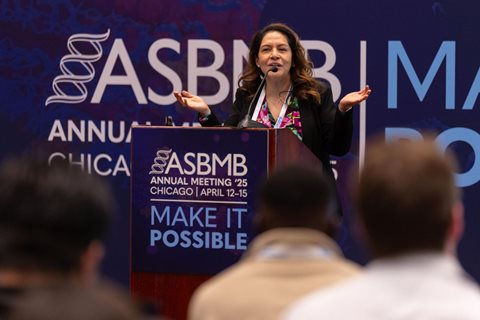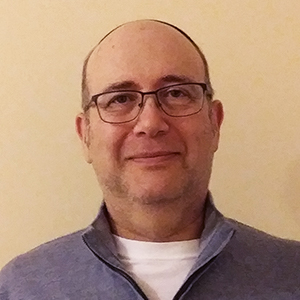Mentoring matters
Many of us have looked for a mentor, but what does a mentor look for in a mentee? The relationship is, after all, a two-way street.
Passion for the subject, an active participant, someone who follows through and is respectful of the mentor’s time and is all in: Those are among the signs of a good mentee, according to a panel of experienced mentors who participated in “Mentoring Matters,” an American Society for Biochemistry and Molecular Biology webinar.
“Mentoring is an important topic to both our audience and our Education and Professional Development Committee,” said Danielle Snowflack, ASBMB director of education, professional development and outreach, who organized the webinar in January to coincide with National Mentoring Month. “We’ve all had strong mentors throughout our careers who helped us get to our current positions. Many of us serve not only as research mentors, but as guides for navigating career changes and other aspects of personal development.”
On the panel were June Oshiro and Marianne Mallia, who both work in scientific publications at the Mayo Clinic; David A. Wetter, a professor of dermatology at the Mayo Clinic; and Adela Cota–Gomez, an associate professor of medicine at the University of Colorado Anschutz Medical Campus.
Watch the webinar
Watch “Mentoring Matters” on the ASBMB YouTube channel.
How to find a mentor? Many students find them on the faculty or in the lab, but there are other ways, especially when considering a career change. Mallia suggested going to conferences to seek out potential mentors and joining a professional association. For example, someone interested in exploring a career switch from research to writing might be interested to know the University of Chicago offers a course in scientific writing. It’s possible a faculty member could be a mentor, she said.
A mentor of Wetter’s encouraged him to join an association, and that helped him. A senior association member naturally will take junior members under their wing, he said.
What bothers mentors? For starters, being unprepared for meetings; also, a mentee who isn’t doing the homework and doesn’t know what they want from a mentor, Cota–Gomez said.
Mentors are motivated by altruism, Oshiro said, and mentees can show gratitude by giving public credit to those who help them. That might mean thanking a mentor as part of a presentation or mentioning them in a paper.
Advice from the panelists already has helped some ASBMB members who participated in the live webinar.
The webinar spurred Sarah Sheridan, an undergraduate at the University of California at Davis and also a mentor, to take quick action. “I immediately clarified our (mentoring) relationship, and I think this has really given us an idea of what needs to be done,” she said. “It has also given us a chance to mention when expectations have not been met and the situation can be improved.”
Fei San Lee, a graduate research assistant at the University of Nebraska-Lincoln, said she picked up several useful tips. Her mentor shared the webinar with her, and Lee, who is currently mentoring an undergraduate, said she learned that honest communication always works.
“A good mentor should always provide a safe environment for the mentee to communicate their feelings, thoughts and ideas.”
Enjoy reading ASBMB Today?
Become a member to receive the print edition four times a year and the digital edition monthly.
Learn moreFeatured jobs
from the ASBMB career center
Get the latest from ASBMB Today
Enter your email address, and we’ll send you a weekly email with recent articles, interviews and more.
Latest in Careers
Careers highlights or most popular articles

Building the blueprint to block HIV
Wesley Sundquist will present his work on the HIV capsid and revolutionary drug, Lenacapavir, at the ASBMB Annual Meeting, March 7–10, in Maryland.

Upcoming opportunities
Present your research alongside other outstanding scientists. The #ASBMB26 late-breaking abstract deadline is Jan. 15.

Designing life’s building blocks with AI
Tanja Kortemme, a professor at the University of California, San Francisco, will discuss her research using computational biology to engineer proteins at the 2026 ASBMB Annual Meeting.

Upcoming opportunities
#ASBMB26 late-breaking abstract submission opens on December 8. Register by Jan. 15 to get the early rate on our Annual Meeting.

Make your abstract stand out
Ensure your research is impossible to overlook. Get quick, practical reminders for crafting an abstract that attracts readers and helps you build connections at the conference.

Inside industry postdocs
As more Ph.D. scientists look beyond academia, industry postdocs offer a new kind of training, where mentorship meets mission-driven research. Fellows at Pfizer and Genentech share how these programs prepare them to translate discovery into impact.

